Table of Contents
Quality Service Guarantee Or Painting Free

Get a rental agreement with doorstep delivery

Find the BEST deals and get unbelievable DISCOUNTS directly from builders!

5-Star rated painters, premium paints and services at the BEST PRICES!
Loved what you read? Share it with others!
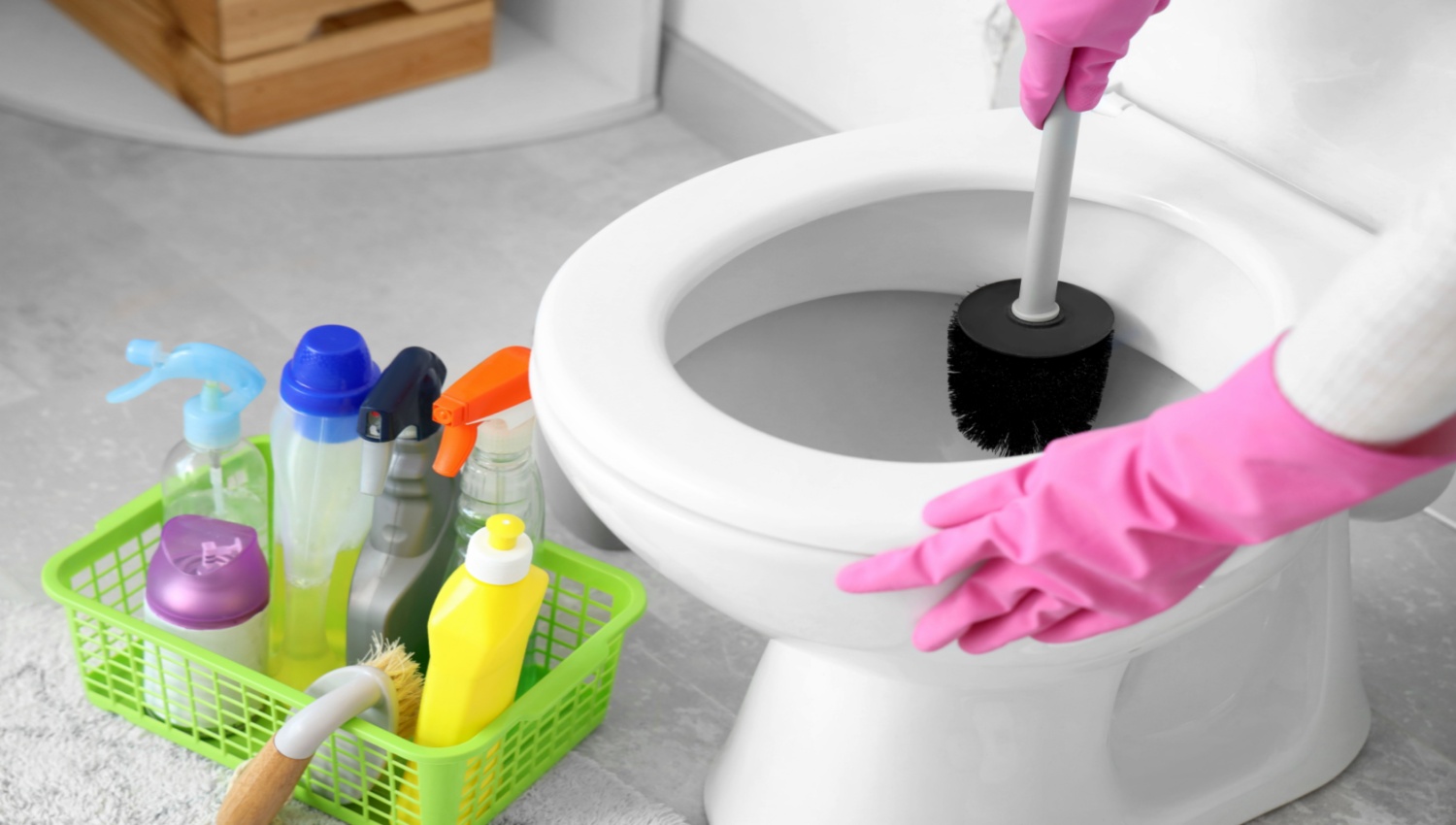

Submit the Form to Unlock the Best Deals Today
Check Your Eligibility Instantly

Experience The NoBrokerHood Difference!
Set up a demo for the entire community
How to Get Stains out of Toilet Bowl - A Step-by-Step Guide to a Clean Toilet
Table of Contents
One of the most annoying issues everyone faces from time to time is stubborn toilet bowl stains. These stains generally feel in the form of a ring or abrasion round. They are nearly impenetrable to the essential cleaning goods. They occur due to large quantities of minerals, hard water deposits, and other dirt deposited in the toilet bowl. So, how to get stains out of the toilet bowl? This article will guide you through practical and safe methods for a sparkling clean toilet.
Why Do Toilet Stains Occur?
Toilet stains are most frequently the result of mineral deposits and rust from hard water, as well as delayed cleaning. These things combined over time lead to severe stains. And that the minerals in your toilet tank and biological (bacteria, mould) contaminants can also cause staining, which adds to why you should keep your water system consistently maintained.
Best Methods for Removing Stains from the Toilet Bowl
To effectively know how to get rid of stains off the toilet bowl, you can use several methods. Start by using a good-quality toilet bowl cleaner that targets mineral deposits and rust. You can try using baking soda and vinegar for tough stains for a natural solution. Regular cleaning with a toilet brush helps prevent buildup, while using a toilet tank cleaner can reduce mineral deposits.
Quality Service Guarantee Or Painting Free

Get a rental agreement with doorstep delivery

Find the BEST deals and get unbelievable DISCOUNTS directly from builders!

5-Star rated painters, premium paints and services at the BEST PRICES!
Home Remedies for Cleaning Stained Toilets
Home remedies for cleaning stained toilets provide efficient and environmentally friendly alternatives. Common techniques for efficiently removing stains involve using vinegar and baking soda. Because borax fights stains, it can also be sprinkled into the bowl. A paste composed of baking soda and water can be used for stubborn stains. With no harsh chemicals, these solutions support the upkeep of a fresh, clean toilet.
Here's a thorough, step-by-step guide to cleaning stained toilets with a variety of DIY solutions:
Step-by-Step Process for Cleaning Stained Toilets
Home remedies for cleaning stained toilets provide efficient and environmentally friendly alternatives. Common techniques for efficiently removing stains involve using vinegar and baking soda. Because borax fights stains, it can also be sprinkled into the bowl. A paste composed of baking soda and water can be used for stubborn stains. With no harsh chemicals, these solutions support the upkeep of a fresh, clean toilet.
Here's a thorough, step-by-step guide to cleaning stained toilets with a variety of DIY solutions:
Step 1: Prepare the Area
Put on Gloves to protect your hands from cleaning agents and germs. Make sure to open windows or switch on the exhaust fan for ventilation.
Step 2: Initial Rinse
Flush the toilet to remove standing water and dirt that is not stuck to the surface.
Step 3: Choose Your Cleaning Method
There are a variety of methods to choose from. For example:
- Baking Soda and Vinegar
- Add 1 cup of baking soda to the bowl.
- Then add 1-2 cups of vinegar.
- Let the mixture sit for about 30 minutes.
- Dish Soap and Baking Soda
- Squirt an adequate amount of dish soap into the bowl.
- Sprinkle 1 cup of baking soda over it.
- Wait for 15-20 minutes for it to work.
- Borax
- Sprinkle around 1 cup of borax inside the toilet bowl.
- Let it sit for at least 30 minutes or overnight for better results.
- Lemon Juice
- Pour 1-2 cups of lemon juice into the bowl.
- Wait for 30 minutes.
- Hydrogen Peroxide
- Pour 1 cup of Hydrogen Peroxide into the toilet bowl.
- Allow it to sit for around 30 minutes.
Step 4. Scrub the Bowl
Use a practical and sturdy toilet brush to scrub the bowl and around the rim. Use a pumice stone to tackle the difficult stains.
Step 5: Final Rinse
Flush away the cleaning agents and dirt.
How to Get Rid of Brown Toilet Stains Using Specialized Products
Specialised solutions such as gel cleansers, calcium and rust removers, and toilet bowl tablets might be helpful in getting rid of brown stains on toilets. These solutions simplify removing stubborn stains and restoring cleanliness by focusing on rust and mineral deposits. Here's how to get rid of toilet bowl stains using different products:
1. Calcium and Lime Removers
These products target hard water mineral deposits, which can appear as chalky or white stains. Apply as directed, allowing it to sit for the allotted time before cleaning and flushing. Examples: Calcium accumulation can be effectively dissolved by-products like Lime-A-Way or CLR (Calcium, Lime, and Rust Remover).
2. Rust Removers
Designed specifically to remove rust stains from iron-rich water, this product applies straight to the soiled area, lets it sit, scrubs, and then gives it a good rinse. Examples: Rust-O-Rid and Iron Out are two products that are good for removing rust stains.
3. Gel Toilet Bowl Cleaners
These heavier formulas stick to surfaces, providing for extended stain contact time. Before scrubbing, apply under the rim and let it sit for a few minutes. Examples: Brands like Lysol offer gel cleansers with high stain penetration.
4. Toilet Bowl Tablets
These tablets release cleaning chemicals with each flush, gradually preventing stains and build-up. Before placing it in the tank or bowl, please proceed cautiously to avoid internal component damage. Examples include Lysol toilet bowl cleaner tablets or Clorox toilet bowl tablets.
5. Disinfecting Cleaners
These vital hygiene products are designed to destroy bacteria while clearing stains. Apply or spray, let settle, scrub, and rinse the surface.
Examples: The exterior and bowl of the toilet can be cleaned with Lysol or Clorox disinfectant cleaners.
6. Cleaning Agents with Enzymes
These cleaners are perfect for eliminating stains from biological build-up since they use enzymes to break down organic debris. To get the most out of the application, follow the directions and let it sit.
You may successfully keep a clean and hygienic toilet by choosing the right product depending on the discolouration.
How to Get Rid of Toilet Bowl Rust Stains
Use a specific rust remover to remove rust stains on toilet bowls. Once the stained areas are covered, apply the remover, let it sit, clean it with a toilet brush, and flush it. Routine maintenance and cleaning can avoid stains in the future.
It can be difficult to get rid of toilet bowl rust stains, but with the correct materials, the task becomes achievable.
- Baking Soda and Vinegar: Fill the bowl with baking soda and vinegar. After letting it fizz for ten to fifteen minutes, clean it with a toilet brush and flush it.
- Borax: Cover the toilet bowl with approximately one cup of Borax and leave it there for half an hour. After using a toilet brush to scrub, flush.
- Industrial Rust Remover: Seek a toilet bowl cleaner made especially to get rid of rust stains. For optimal results, refer to the product's instructions.
- Hydrogen Peroxide: Before cleaning and flushing, add a cup of hydrogen peroxide to the bowl and let it sit for 30 minutes.
- Coca-Cola: Fill the toilet bowl with a can of Coca-Cola, then leave it there for a few hours or overnight. After using a toilet brush to scrub, flush.
- Pumice Stone: Gently scrape the rust stains using a wet pumice stone. This works well for tough stains, but take care not to harm the porcelain.
Preventing Future Toilet Bowl Stains
Regular cleaning, water softener use, and the thoughtful addition of toilet bowl tablets are all necessary components of a proactive strategy to prevent toilet stains over time. This comprehensive guide will assist you in keeping your toilet stain-free. Once you've learnt how to get rid of stains from the toilet bowl, prevention is essential.
Here's how to take some preventative steps to remove toilet stains permanently.
- Regular Cleaning: Use a high-quality toilet bowl cleaner that explicitly targets rust and hard water stains. Clean your toilet at least once a week to stop stains from growing.
- Water Softeners: If you have a hard water supply, consider installing a water softener. It would reduce the stain-causing mineral buildup and be beneficial for your skin and hair.
- Toilet Bowl Tablets: A flush tablet can considerably reduce toilet bowl stains. This will eliminate germs and make your toilet smell good with every flush.
- Regular Maintenance: Get your toilet plumbing checked regularly for leaks and drainage.
- Water Quality: If you notice persistent stains on the toilet and tap surfaces, test your water quality regularly. This can be due to the water's high iron or mineral content. Install a filtration system for your whole house.
Common Mistakes to Avoid When Cleaning Toilet Stains
It's common to make mistakes when cleaning your toilet, which can harm the surface and cause problems down the road. When learning how to remove stains from toilet bowls, avoid utilising abrasive materials that can scratch the surface. Here's a thorough look at typical hazards to stay away from:
- Ignoring to Rinse Out Cleaner Residue: Failure to rinse out cleaning agents thoroughly may result in accumulation and discolouration over time.
- Using cleaning products excessively: Applying too much cleaner can cause residue and buildup, making cleaning the toilet later tricky.
- Using Toxic Chemicals:
- Bleach: Although a great disinfectant, bleach can discolour and harm porcelain in toilets over time.
- Acidic Cleaners: Substances containing potent acids, such as hydrochloric acid, have the potential to permanently etch surfaces.
- Using Too Much Scrubbing
- Aggressive Scrubbing: Scrubbing the toilet bowl with brushes or abrasive pads too vigorously will scratch the surface and increase the likelihood of stains.
- Metal scrubbers and brushes: These can leave bacteria-harbouring scrapes.
- Disregarding Masks and Gloves: Not wearing a mask might result in fume inhalation, and not wearing gloves can expose your skin to corrosive chemicals.
- Extended Intervals Between Cleanings: If allowed to accumulate, stains and deposits become more difficult to remove and may result in irreversible discolouration.
- Applying Food-Grade Cleaning Products: If you use food-grade products like vinegar or baking soda too often, they might need help removing stubborn stains.
- Ignoring Tough-to-Reach Spots: Concentrating just cleaning the bowl itself may leave unclean areas behind that exacerbate odour and discolouration.
- Using Outdated or Old Cleaners: Old cleaning supplies can degrade and even lose their efficacy, leaving behind residue that is challenging to get rid of.
- Neglecting Routine Maintenance: If left unattended, ignoring little spills or stains can eventually cause more prominent issues and damage.
You can effectively maintain your toilet and prevent damage to its surface by avoiding these typical blunders!
Removing stains from toilet bowls can be difficult, but it is doable with the appropriate techniques and materials. By following the instructions in this article, you may efficiently remove persistent stains and restore your toilet bowl to its original condition. The hygiene and cleaning staff at NoBroker Cleaning Services provides outstanding house cleaning services that eliminate all bacteria and dangerous pollutants. Our client satisfaction testimonials attest to a 5-star expert house cleaning service. With some work and the appropriate method, you can have a gleaming, clean toilet bowl.
Frequently Asked Questions
1.How often should I clean my toilet bowl?
Ans: It is generally advised that you clean your toilet bowl at least once every week. However, if your water is hard or contains a high mineral content, you may need to clean it more frequently to avoid stains and buildup.
2. Can I use bleach to clean my toilet bowl?
Ans: It is advisable to use it sparingly or to utilise specialised toilet cleansers that are both effective and safe. If you use bleach, be sure to flush thoroughly and ventilate the area.
3. What’s the best way to clean a toilet bowl?
Ans: To effectively clean a toilet bowl, first apply a high-quality toilet bowl cleaner under the rim and allow it to sit for 10-15 minutes. Then, using a toilet brush, scrub the entire bowl, concentrating on stains and hard-to-reach spots. Flush to remove the cleanser.
4. What should I avoid when cleaning my toilet?
Ans: Avoid using abrasive scrubbers or metal brushes, which can scratch the toilet’s surface. Also, do not neglect cleaning under the rim and around the base.
5.Are toilet bowl tablets effective for cleaning?
Ans: Toilet bowl tablets can be effective for maintaining cleanliness between deep cleanings. They release cleaning agents with each flush, helping to prevent stains and odours.
6.What should I avoid when cleaning my toilet?
Ans: Avoid using abrasive scrubbers or metal brushes, which can scratch the toilet’s surface. Also, do not neglect cleaning under the rim and around the base.
7. Are toilet bowl tablets effective for cleaning?
Ans: Toilet bowl tablets can be effective for maintaining cleanliness between deep cleanings. They release cleaning agents with each flush, helping to prevent stains and odours.
Recommended Reading
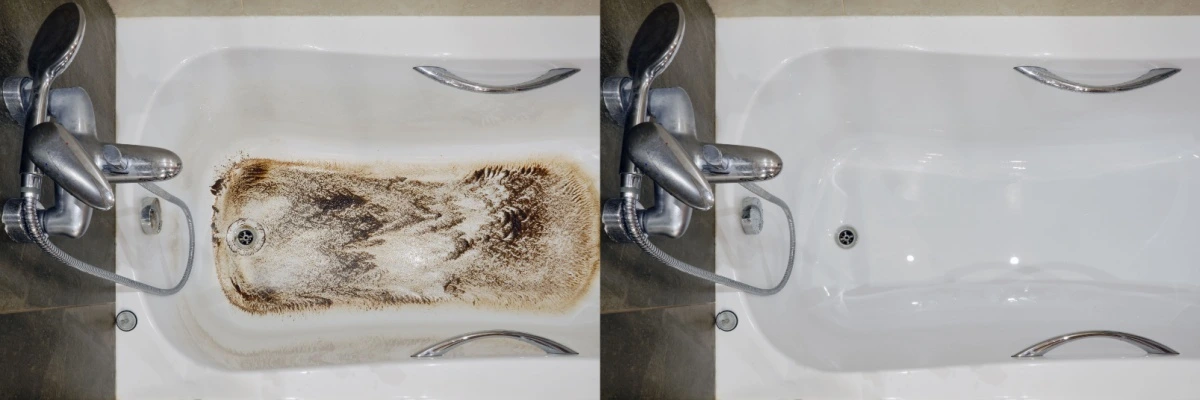
Bathtub Cleaning Solutions: Step-wise Cleaning Methods to Keep Your Tub Sparkling Clean in 2025
February 24, 2025
1958+ views
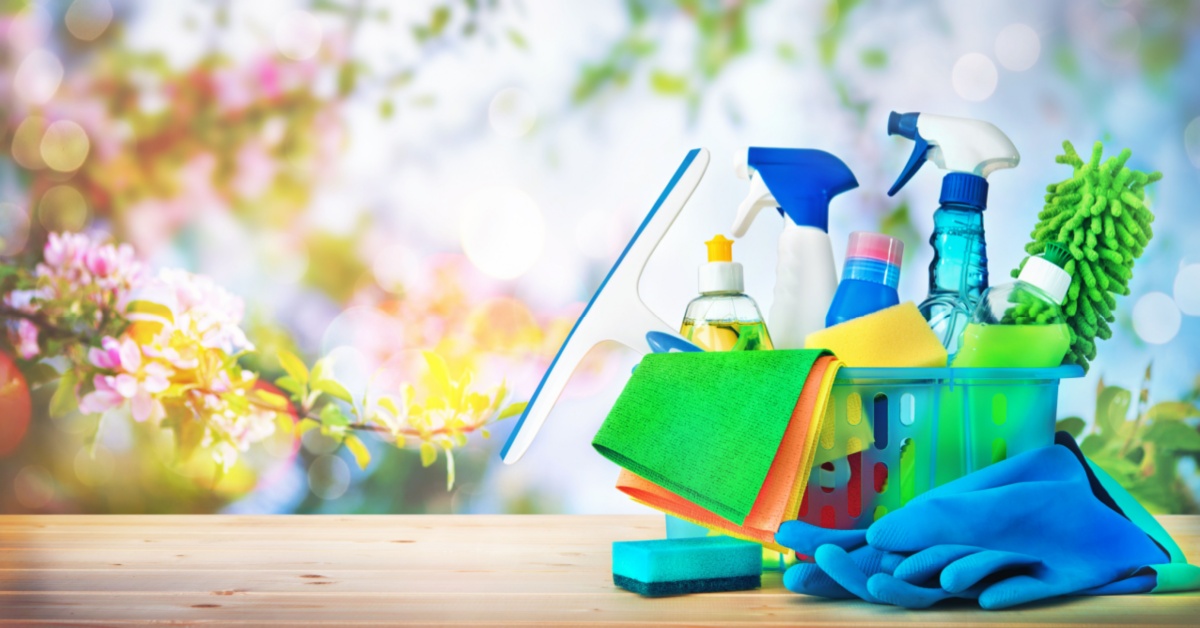
Top 10 Bathroom Cleaning Tools for your Sparkling and Hygeinic Space 2025
February 11, 2025
1166+ views
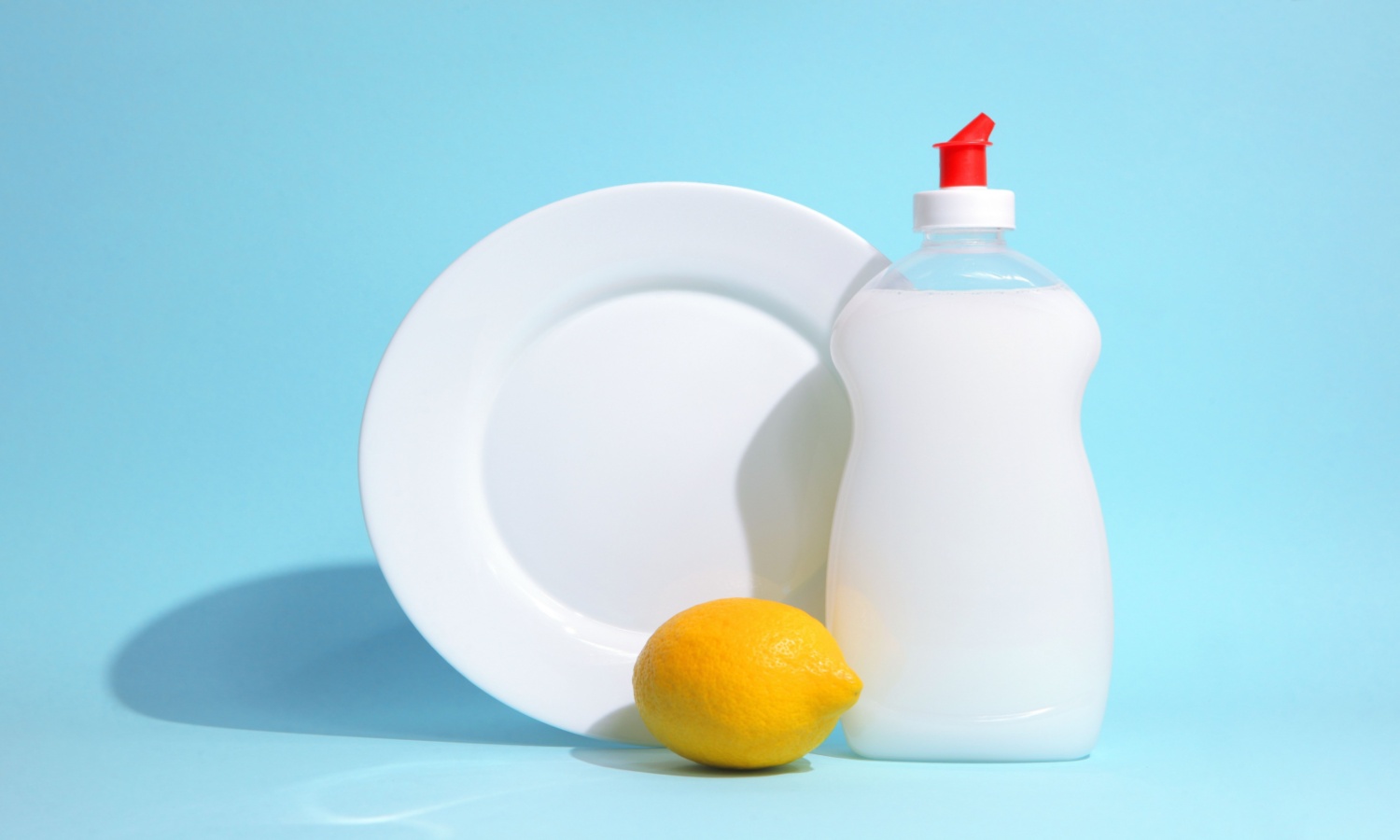
10 Best Bathroom Cleaning Liquid: Solutions for a Sparkling and Hygienic Space 2025
February 10, 2025
3383+ views
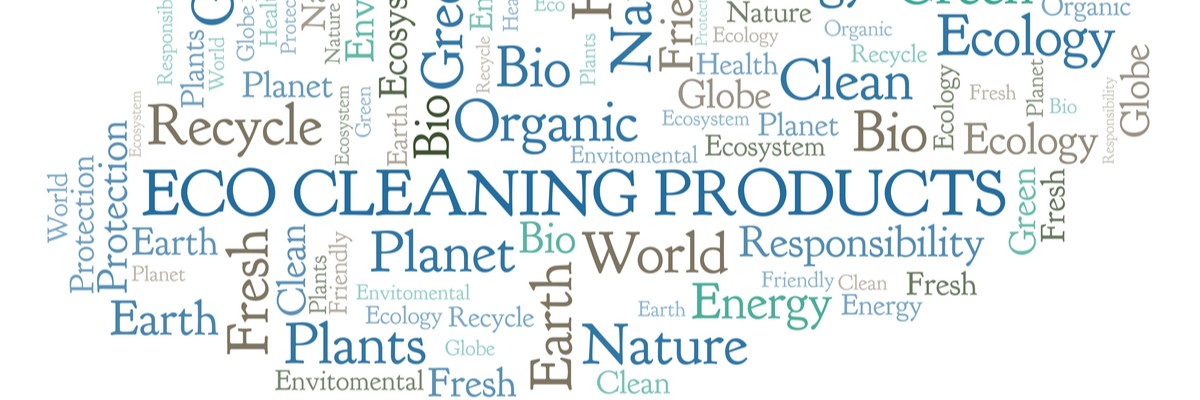
Homemade Toilet Cleaner Recipes: Effective and Eco-Friendly Solutions
January 31, 2025
4518+ views
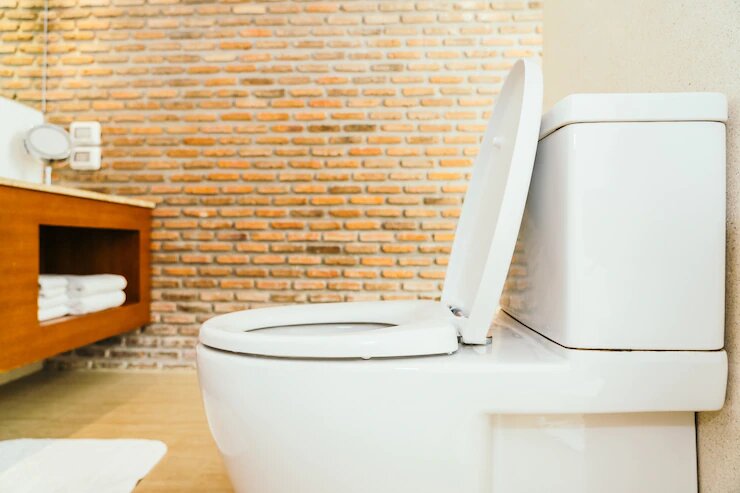
How to Clean a Toilet ? A Detailed Guide
January 31, 2025
4026+ views
Loved what you read? Share it with others!
NoBroker Cleaning Testimonials
Best cleaning service by nb. Would recommend others too
I recently used NoBroker Cleaning Services for a deep house cleaning, and I am quite satisfied with the experience. The booking process was smooth and hassle-free, and the team arrived on time as scheduled. The cleaning professionals were thorough and well-equipped, ensuring every corner of the house was properly cleaned. They paid attention to details, including dusting, mopping, and scrubbing hard-to-reach areas. My kitchen and bathrooms, in particular, were cleaned to a high standard, leaving them spotless and fresh. Overall, NoBroker Cleaning Services provided good value for money, and I would recommend them to anyone looking for a reliable and convenient cleaning service.
Very good cleaning service provider I required next time staff friendly
team was very good The service was very professional Very satisfied by the work
Very good professional work done by house cleaning. Worth every penny.
Best service
Easy hassle free service from booking to execution. The interaction with customer care and service person were pleasant. Satisfied by the cleaning, much recommended.
I really well experience with bathroom cleaning un believable work with good hygiene. I recommend to everyone. I will continue with bathroom cleaning from last 4 months.
Recently opted the cleaning services from no broker. The service was on time and really good with affordable price. The technicians are polite and did their job perfectly.
Nice work
The finest service with affordable cost. Great 👍 work done by these people. Always Recommended
Nice service
Awesome service .. they are so good and super fast and does cleaning awesomely perfect!!!!
Best deep cleaning service provider in pune .Very polite and professional in their work. Best complements to the entire team..
Best flat cleaning service provider in pune Very good service.... Very quick and neat and clean home..... It was shining like mirror.. Highly recommended.
Superb house cleaning service provider in wakad pune Kitchen cleaning was done very sincerely. All equipment and chemicals were got along by the team. Punctual, sicere, good work quality.
Best cleaning service in Pune. Timely work till customer satisfaction. Thanks to team.
Thank you, nobroker cleaning services for your outstanding service. Keep up the fantastic work!
There service are best compared to price. Time was always perfect. I really appreciate their team for perfection and much more
Awesome house cleaning service provider in pimple saudagar .I sincerely appreciate your work. you put so much effort into your work that the house is immaculate 👌👍 thank you for your great service you have been very professional in handling our needs thank you ☺️
I have availed service for terrace floor cleaning. The persons who came for cleaning were very professional. They performed the task very nicely.
Best ac service provider in pune .Nice Work Good AC Service Immediately Response On Time All Call Attend
Best ac service provider in pune .Nice Work Good AC Service Immediately Response On Time All Call Attend
Great ac repair and service in pune .Very professional they understand customers problems and relevant cost wise, also work wise the are exc8
Cleaning was done very effectively. The staff also is very humble and resolved all doubts about the task. Will definitely recommend to anyone requiring deep cleaning services
Best house deep cleaning provider in pune .I got reference from friends. I deep cleaned my house first time. And I am very glad that I picked them. No other company cleans wall. But Nobroker is very effiecient wall cleaner.
One of the best service provider in Pune. Quality of work
Best cleaning services provider in bangalore .superb services provided by her
Best cleaning service provider in bangalore.It was a wonderful experience. Their team spent full time without any hurry and cleaned all the corners of the house. They are polite and very supportive. All of them
As per our request, They clean excellent with speed and provide me Affordable Cleaning service provider in bengalore .I am completely impressed with their professionalism and customer service. Thanks
Nice service
Highly recommended for the people who are looking for for packers and movers in chinchwad
Nobroker Cleaning Services is the go-to company for all your cleaning needs. They have a dedicated team that goes above and beyond to ensure customer satisfaction.
NoBroker Home Service Office has been a game-changer in my property search. Their user-friendly platform, efficient customer service, and transparent deals make the home-hunting process a breeze. I found my dream home with ease, and their support team was always there to assist. Highly recommended for hassle-free property transactions!
I recently used nobroker services to have my house cleaned, and I must say, I was impressed with their work. The team was prompt, courteous, and professional
Had a fantastic experience with Nobroker. They have made our moving into a locked home, super swift and smooth. Very polite, knowledgeable and efficient folks.
We are quite satisfied of what we get. They are quite professional and sincere towards their work.well done nobroker team
Nice job
Nice experience with Nobroker Cleaning service
Most Viewed Articles
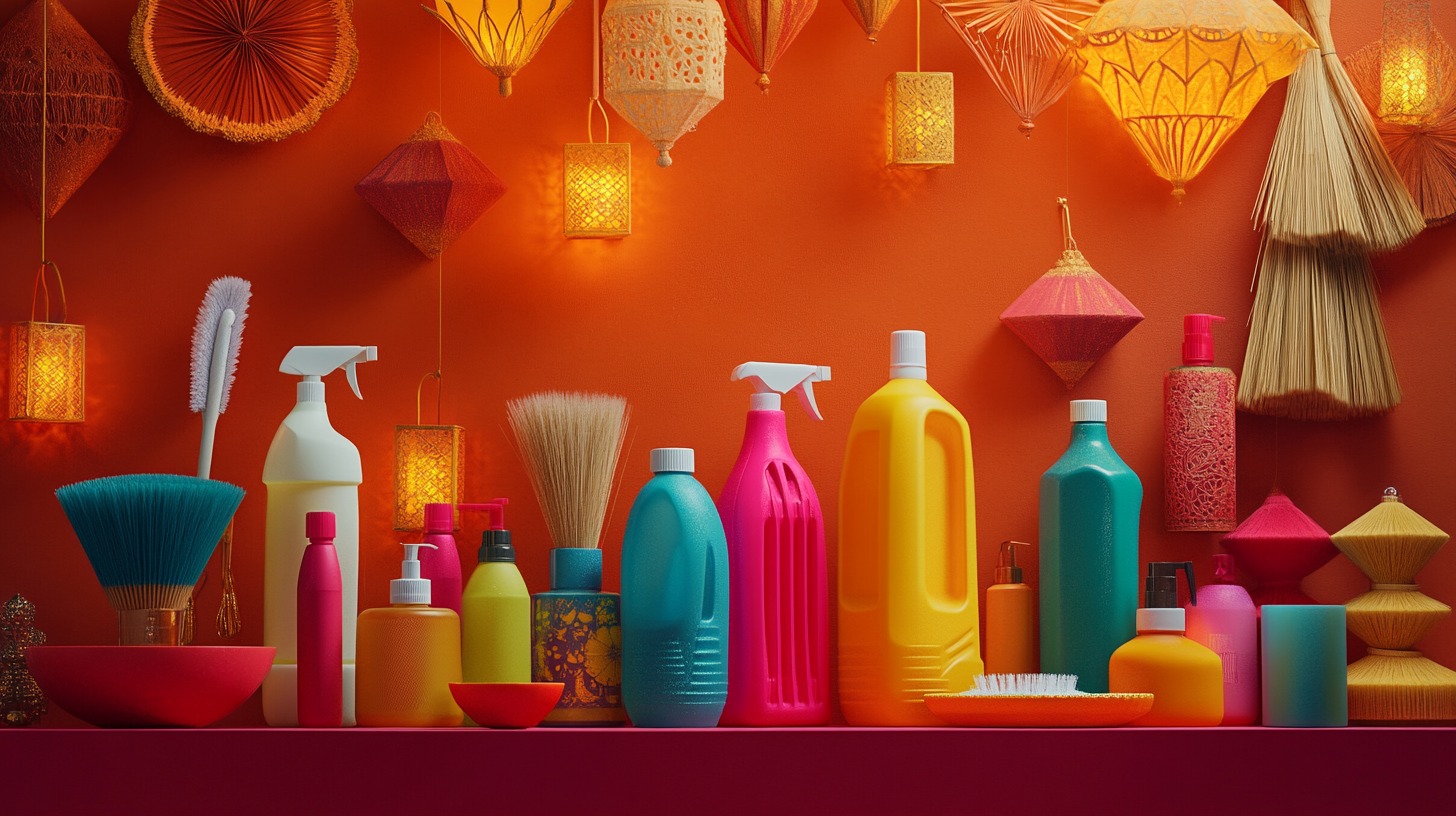
Diwali Cleaning Tips and Guide: Make Your Home Shine for the Festival in 2025
January 31, 2025
14213+ views
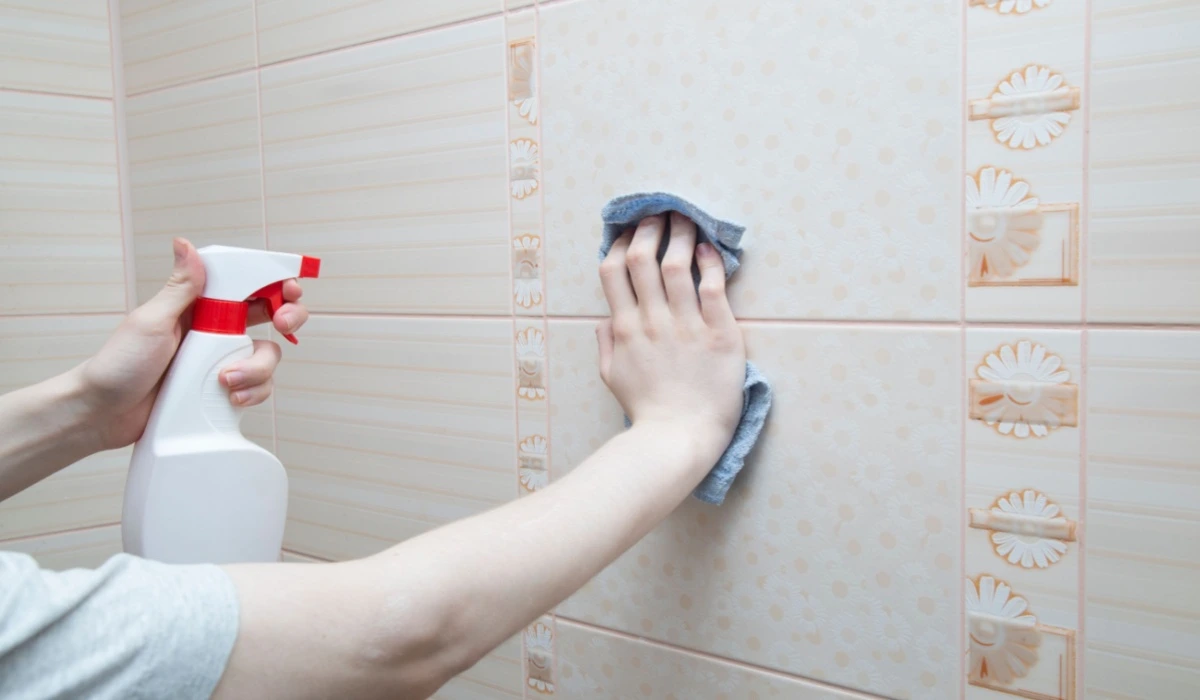
How to Clean Bathroom Tiles: Easy and Effective Methods for a Sparkling, Hygienic Bathroom for 2025
January 15, 2025
11257+ views
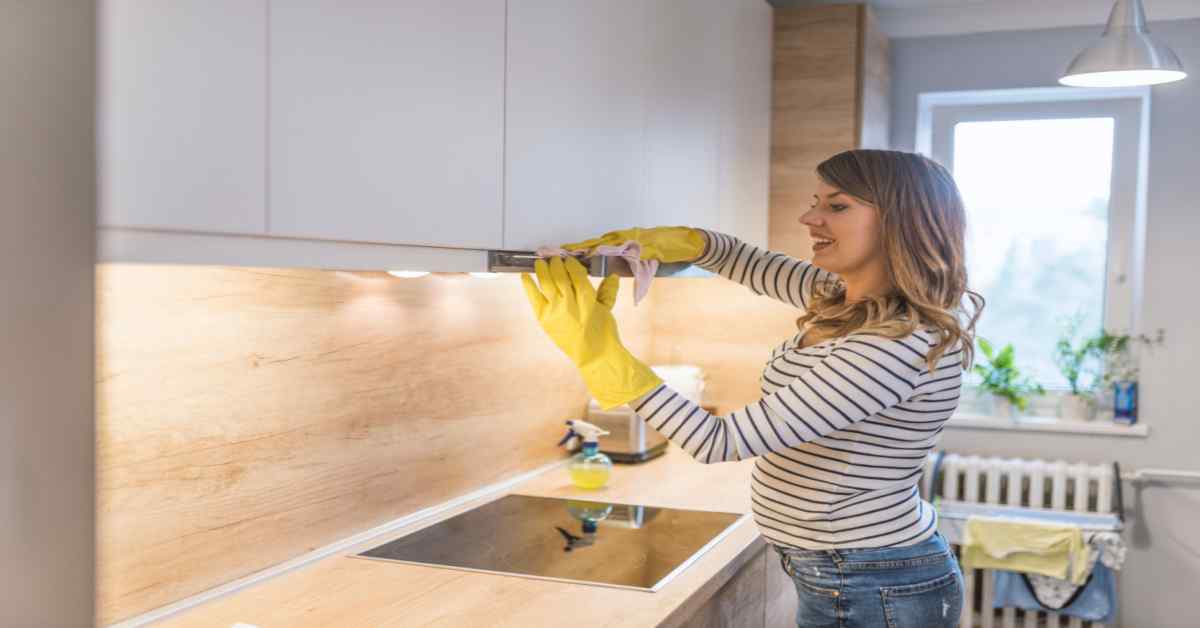
How to Clean Kitchen Exhaust Fan Properly?
January 15, 2025
9077+ views
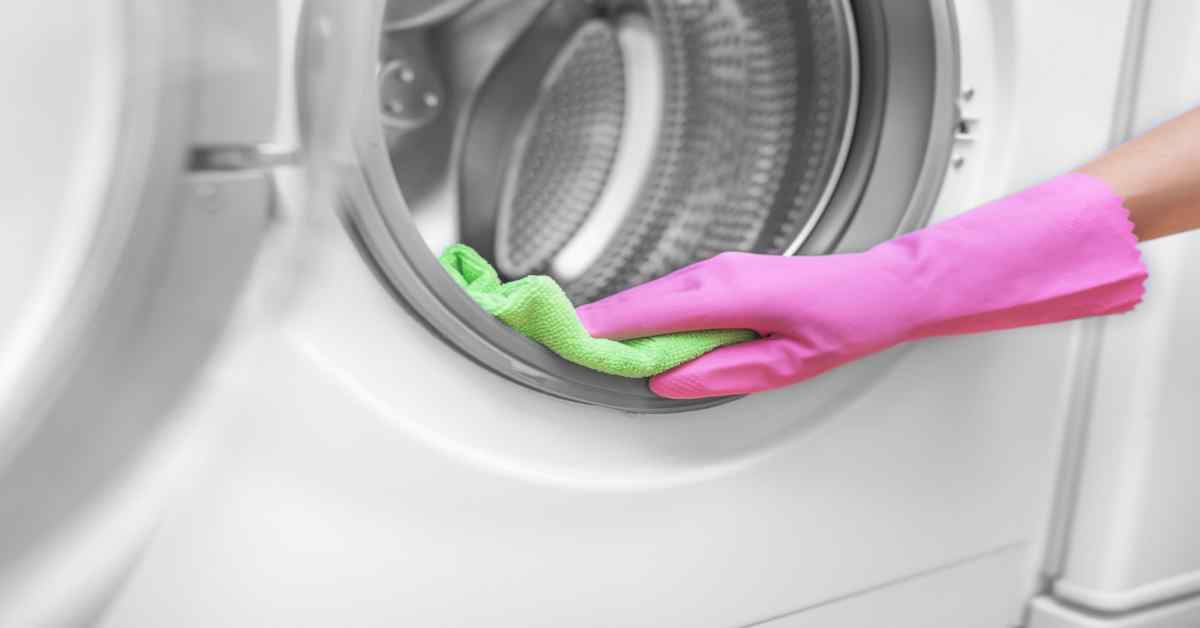
Deep Clean Your Washing Machine: Step-by-Step Guide & Tips
January 31, 2025
8734+ views

January 31, 2025
8386+ views
Recent blogs in
Bathtub Cleaning Solutions: Step-wise Cleaning Methods to Keep Your Tub Sparkling Clean in 2025
February 24, 2025 by Krishnanunni H M
Top 10 Bathtub Cleaner Liquids With Prices in India: Benefits and Uses in 2025
February 24, 2025 by Kruthi
Top 10 Marble Cleaning Liquids with Prices in India in 2025
February 23, 2025 by srivalli susarla
How to Clean Couches at Home: Effective Tips for Every Couch Material in 2025
February 23, 2025 by Kruthi
Top 10 Floor Cleaner Liquids with Prices in India 2025
February 23, 2025 by Kiran K S





Join the conversation!